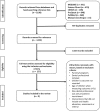Effectiveness of preventive dental programs offered to mothers by non-dental professionals to control early childhood dental caries: a review
- PMID: 31375106
- PMCID: PMC6679429
- DOI: 10.1186/s12903-019-0862-x
Effectiveness of preventive dental programs offered to mothers by non-dental professionals to control early childhood dental caries: a review
Abstract
Background: Early childhood caries is a common chronic childhood disease and maternal oral health is a risk factor. Improving the oral health behaviours of pregnant women/young mothers can positively influence the oral health of children and reduce their caries risk. Such preventative strategies have been undertaken by non-dental professionals producing mixed results encompassing various interventions across the perinatal period. However, no comprehensive review of these studies has been undertaken. The aim of this review was to assess the effectiveness of maternal oral health programs undertaken during the antenatal and/or postnatal period by non-dental health professionals to reduce early childhood caries.
Methods: A systematic search of five databases was undertaken using key search terms. Studies were included if they (a) involved quantitative study designs with a control; (b) were published in English; (c) reported on interventions delivered by non-dental professionals (d) delivered the intervention to expectant mothers or mothers with young infants up to 24 months; (e) measured outcomes when the child was under 5 years; (f) measured changes in oral health outcomes of children clinically and oral health behaviours of mothers or children. No restrictions were placed on the study quality and setting.
Results: Nine studies met the inclusion criteria and involved interventions delivered by diverse non-dental professionals across the antenatal (n = 1), postnatal (n = 6) and perinatal period (n = 2). Most studies were of low methodological quality (n = 6). The interventions focussed on oral health education (n = 8), dental referrals (n = 3) and oral health assessments (n = 1). Interventions conducted in either the postnatal or antenatal periods showed meaningful improvements in children's clinical and mother's behavioural oral health outcomes. The outcomes appear to be sustained when a suite of interventions were used along with referral reminders. There were mixed results from interventions across the perinatal period.
Conclusions: Non-dental professionals can promote maternal oral health by providing oral health education, risk assessment and referrals. Combining these interventions could provide a sustained improvement in oral health outcomes for children although current evidence is weak. More high-quality studies are needed to confirm these findings and determine whether the antenatal and/or postnatal period is best suited to deliver these interventions.
Keywords: Dental decay; Early childhood; Non-dental professionals.
Conflict of interest statement
The authors declare that they have no competing interests.
References
Publication types
MeSH terms
LinkOut - more resources
Full Text Sources
Medical
Miscellaneous


